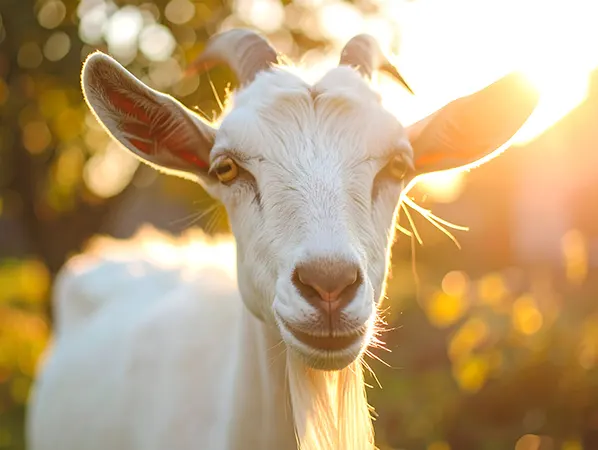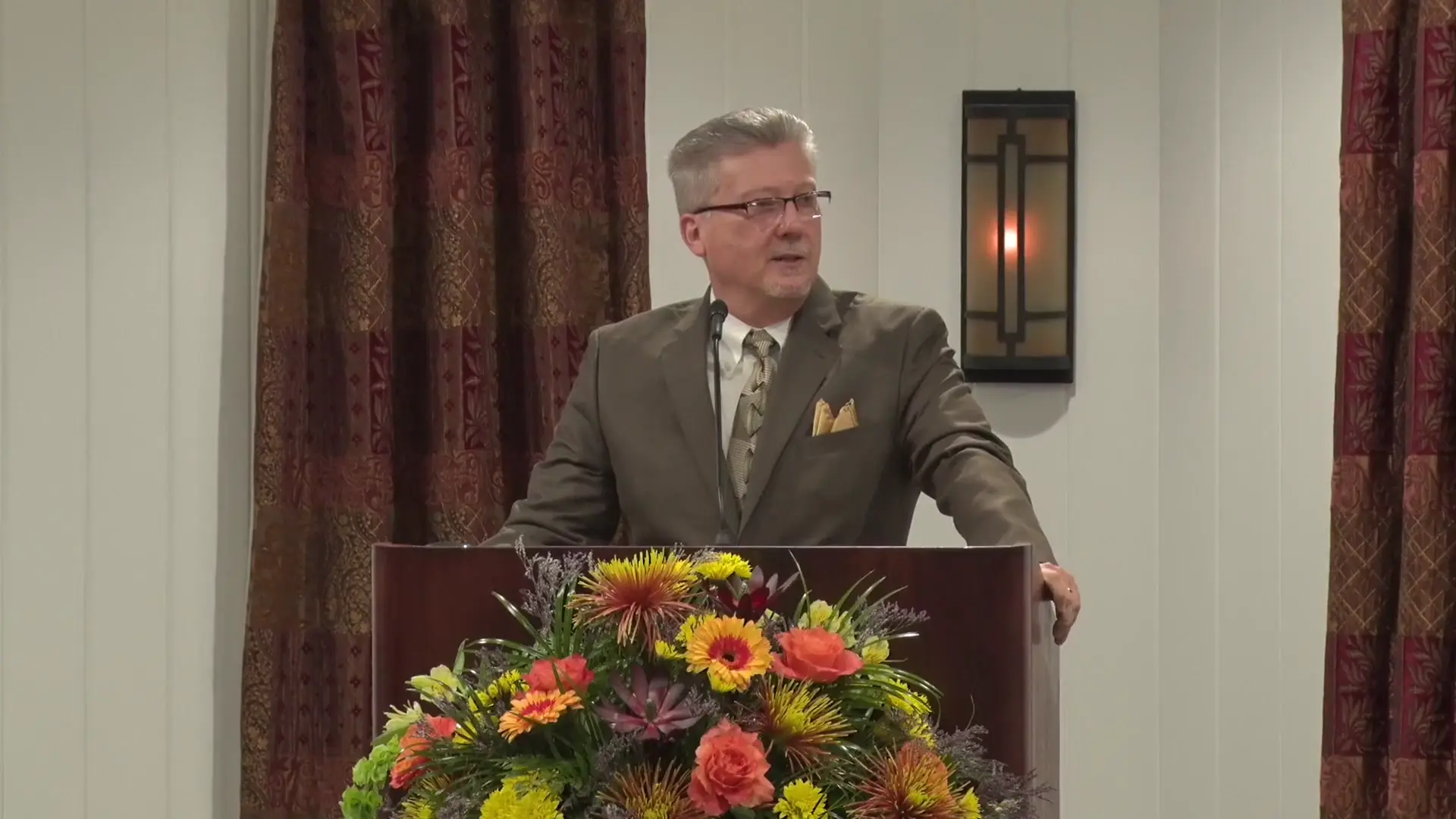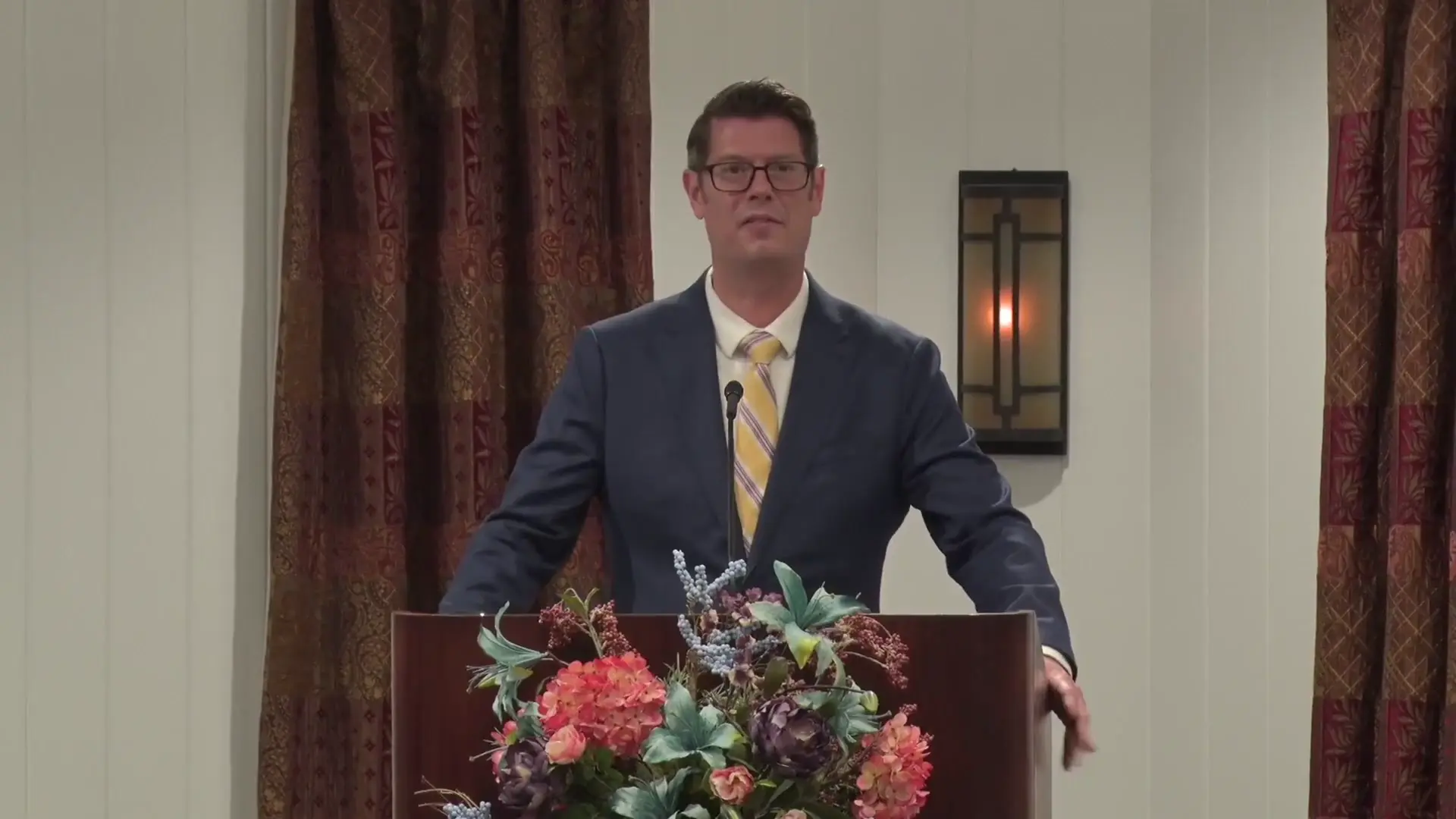Filter by Categories
Why Two Goats on Atonement? (Part Two)
CGG Weekly by David C. GrabbeOn the Day of Atonement, a unique sin offering for the congregation involved two goats. Through the casting of lots, one goat was designated for the LORD, to satisfy or appease Him. Notably, no hands were laid on this animal; it was simply killed, and its blood, free from the record of sin, cleansed the objects nearest to the Lord. In contrast, the second goat, the live one, had all the iniquities, transgressions, and sins of Israel confessed over it, symbolically receiving the burden of the people's sins to be taken away. This reversal of the standard sin offering procedure, where hands are laid on the sacrifice before its blood is shed, necessitated two animals: one for shedding blood to cleanse, and the other to bear the sins away. Jesus Christ perfectly fulfilled both roles of this Day of Atonement offering, with His blood cleansing as the first goat did, and His bearing of sins mirroring the function of the second goat, accomplishing what the blood of bulls and goats could not by truly taking away sin.
The Two Goats of Leviticus 16
Sermonette by David C. GrabbeThe first goat is a blood sacrifice to cleanse the altar. The second goat—the 'azazel' or 'complete removal'—is led away and freed (not bound by a chain).

Who Fulfills the Azazel Goat—Satan or Christ? (Part Two)
'Ready Answer' by David C. GrabbeIn the Day of Atonement ritual, the two goats represent a singular sin offering, each fulfilling a distinct role as determined by God through the casting of lots. The first goat, designated for the Lord, serves to satisfy His justice by providing a covering of blood to purify the Holy Place, the Tabernacle, and the altar, addressing the defilement caused by the sinful nation. The second goat, known as the goat of departure or azazel, bears the sins of the people out of sight, symbolizing complete removal. This act reflects the Messiah's bearing of transgressions, carrying them away as if to a land cut off, a place of forgetfulness akin to the grave, where sins are no longer a factor in God's regard. Jesus Christ fulfills both aspects of this offering: His shed blood pays for sin, and He bears those sins away, ensuring they are forgotten by God through a conscious choice to disregard them. This complete removal aligns with scriptural promises that God will remember sins no more. In contrast, the notion of ascribing this role to satan lacks scriptural foundation, as the ritual emphasizes human responsibility for sin, and the bearing of guilt cannot be shifted to another entity. The focus remains on Christ's singular and perfect work in atoning for and removing the sins of many.
Why Two Goats on Atonement? (Part One)
CGG Weekly by David C. GrabbeOn the Day of Atonement, the high priest performed a significant ceremony involving four sacrificial animals, with a particular focus on two goats designated together as a sin offering for the nation. As outlined in Leviticus 16:5, these two goats are uniquely presented as a singular sin offering, differing from the typical sin offering which involves only one animal. One goat was slain, while the purpose of the second goat, known as the azazel, adds a profound layer to the ritual. This dual offering was essential to accomplish atonement for the nation, highlighting a deeper symbolism in the cleansing and handling of sin beyond the ordinary sacrificial practices. The annual ceremony on the Day of Atonement thus reveals a more comprehensive approach to the removal of sin, distinguishing it from regular sin offerings through the roles of these two goats.

Who Fulfills the Azazel Goat—Satan or Christ? (Part One)
'Ready Answer' by David C. GrabbeThe Day of Atonement includes a unique ritual involving two goats, as described in Leviticus 16, which forms a critical part of the annual cleansing ceremony performed by the high priest. These two goats are first mentioned in Leviticus 16:5, where they are designated together as a single sin offering, distinct from the typical sin offering of one animal. This indicates that something beyond mere payment for sin is being accomplished, as both goats are essential to complete the offering. In the ritual, Aaron casts lots to determine the roles of the goats, one lot for the Lord and the other for a goat of departure, ensuring that the decision is entirely in God's hands. The first goat, designated for the Lord, is sacrificed to satisfy His justice and cleanse His house, including the Tabernacle and the people. The second goat, often associated with the Hebrew term azazel, meaning complete removal or departure, serves to bear the sins away to an uninhabited land, effectively removing them from view. The two goats are equal elements in this compound sin offering, each fulfilling a distinct role. The first goat dies as a type of payment for sin, while the second remains alive to demonstrate the complete removal of sin from consciousness and memory. This dual aspect ensures not only the payment for sin but also its total expunging, addressing both justice and the lingering effects of guilt. The ritual underscores that God sees to both the payment and the removal of sin, cleansing even the conscience of the people.
Who Fulfills the Azazel Goat— Satan or Christ? (Part Five)
'Ready Answer' by David C. GrabbeThe church of God is steadfast in its pursuit of truth, rejecting non-biblical traditions to uphold the Word of God. In the ritual of the Day of Atonement as described in Leviticus 16, two goats play distinct roles, each pointing to the work of Jesus Christ. The first goat's blood cleanses the holy place, symbolizing purification and access to God. The second goat, often called the azazel, bears the iniquities of the children of Israel, carrying them away to an uninhabited land for complete removal from view. Scripture clearly states that our iniquity was laid on Him, that He bore our sins, and that He took them away, fulfilling the actions of the live goat. The Day of Atonement, literally the Day of Atonements, involves multiple atonements, highlighting the comprehensive nature of Christ's sacrifice. Without both functions of the two goats—access to God through cleansing and forgiveness through the removal of sins—true reconciliation would be incomplete. If access were granted without forgiveness, sins would soon separate us from God. If forgiveness were given without access, we would lack the relationship necessary to grow in His image. Through Christ's sacrifice, we receive both access to God and the forgiveness of sins, enabling us to attain atonement and grow in His likeness. Lots were cast to determine which goat would fulfill each role, as Proverbs 16:33 teaches that every decision of the lot is from the Lord. This practice reminded the Israelites of their fallibility and the necessity of looking to God for direction in worship. God reserved the decision of each goat's function for Himself, dictating the terms of worship and ensuring that His will, not human choice, prevailed in the ritual.
Understanding the Azazel Goat
Sermonette by David C. GrabbeThe goat for azazel (complete removal) bore the sins of the nation out of sight. Jesus Christ likewise had our iniquities laid on Him, and He bore them.
Atonement Goats and Passover Lambs
Sermonette by David C. GrabbeThe Day of Atonement is not about Satan, but about the complete cleansing from sins through Christ. The Passover is not a sin offering, but a peace offering.
Sins Borne Away
Sermonette by Richard T. RitenbaughThe Day of Atonement represents both a blood sacrifice for covering/cleansing and a means of removing sin permanently from the camp of Israel.
The Peculiarities of Atonement
CGG Weekly by Richard T. RitenbaughFasting teaches us to realize just how dependent we are on God. Every day, every hour, every minute, He supplies us with everything we need for life.
Is Barabbas the Fulfillment of the Scapegoat?
CGG Weekly by David C. GrabbeBecause of Matthew's inclusion of a number of Day of Atonement-related symbols, one theory holds that Barabbas was a type of the scapegoat (azazel).
Inventing Goddesses and Demons (Part Three)
CGG Weekly by David C. GrabbeSome modern translations of Leviticus 16 assert that the live goat (scapegoat) was a sacrifice that God commanded Israel to send to a demon named Azazel!
The Unity of Atonement
Sermonette by Austin Del CastilloWe fast to learn humility, sacrifice, and empathy towards our Savior, who had His blood shed and who bore our sins, being forsaken for our sakes.

Azazel: Beginnings
Sermon by David C. GrabbeWhile there is a handful of common starting places for understanding the azazel, none of them has multiple witnesses of Scripture. We must begin elsewhere.

Azazel: Endings
Sermon by David C. GrabbeOne goat had to die for cleansing; the other goat had to remain alive for bearing the sins away. Jesus fulfilled both roles. Satan's binding atones for nothing.
Devil in the Details?
CGG Weekly by David C. GrabbeA mysterious commentary has been used and repeatedly re-quoted as a proof that the azazel goat represents Satan. This source warrants closer inspection.
Jesus Christ, the Bearer of Sin
Sermonette by David C. GrabbeThe Messianic prophecy in Isaiah 53, plus the testimony of Peter and the author of Hebrews, show that Jesus fulfilled the azazel goat's role by bearing sin.
Led Outside the Gate
CGG Weekly by David C. GrabbeJesus permitted Himself to be sent by the leaders and led by their agents in true meekness, submitting to the Father's will, even cleansing those who led Him.

Jesus in the Feasts (Part Four): Atonement
Sermon by Richard T. RitenbaughIsaiah 53 and passages from the New Testament substantiate Christ's dual role in shedding His blood and bearing away sins, thereby reconciling humanity to God.

Azazel: Observations and Questions
Article by Pat HigginsDoctrinal changes after decades of believing differently can raise questions. God reveals truth by His Spirit on His timetable and for His own reasons.
The Doctrine of Israel (Part Fourteen): Israel Redeemed
Sermon by Richard T. RitenbaughGod employs a winnowing process in selecting those who will enter the Millennium. The process includes punishment for Israel's failure to serve as priests.
Hebrews 10:9 - Sacrificial System or Old Covenant?
Sermonette by Charles Whitaker (1944-2021)Hebrews 10:9 does not say that God's law or the Old Covenant has been done away, but that the system of animal sacrifices has been set aside for now.

Deuteronomy, Land Sabbaths, Atonement, and Third Tithe
Sermon by Ryan McClureWhat has come to light regarding reading Deuteronomy, the year of release, the Day of Atonement, the third tithe year, and Passover.
Who Is Responsible For Sin?
Sermonette by David C. GrabbeThough Satan influences, the choices an individual make are totally his own, even for those without God's Spirit. We sin when we are drawn away by our own desires.
An Intimate Expanding Relationship
Sermon by Mark SchindlerWe must trade our impulsive and capricious carnal natures for a controlled, sacrificing nature, imitating Christ in an intimate, expanding relationship.
The Day of Atonement and Israel's Future
Sermonette by David C. GrabbeThe cleansing of Joshua's filthy robes in Zechariah 3 is a future application of the cleansing in Leviticus 16, when Jesus Christ cleanses Israel in the future.

The Cursed Redeemer
Sermon by Richard T. RitenbaughHanging on a tree was designated the punishment for the worst kind of sin. Jesus was hung on a tree, having fulfilled the curse of the law for us.